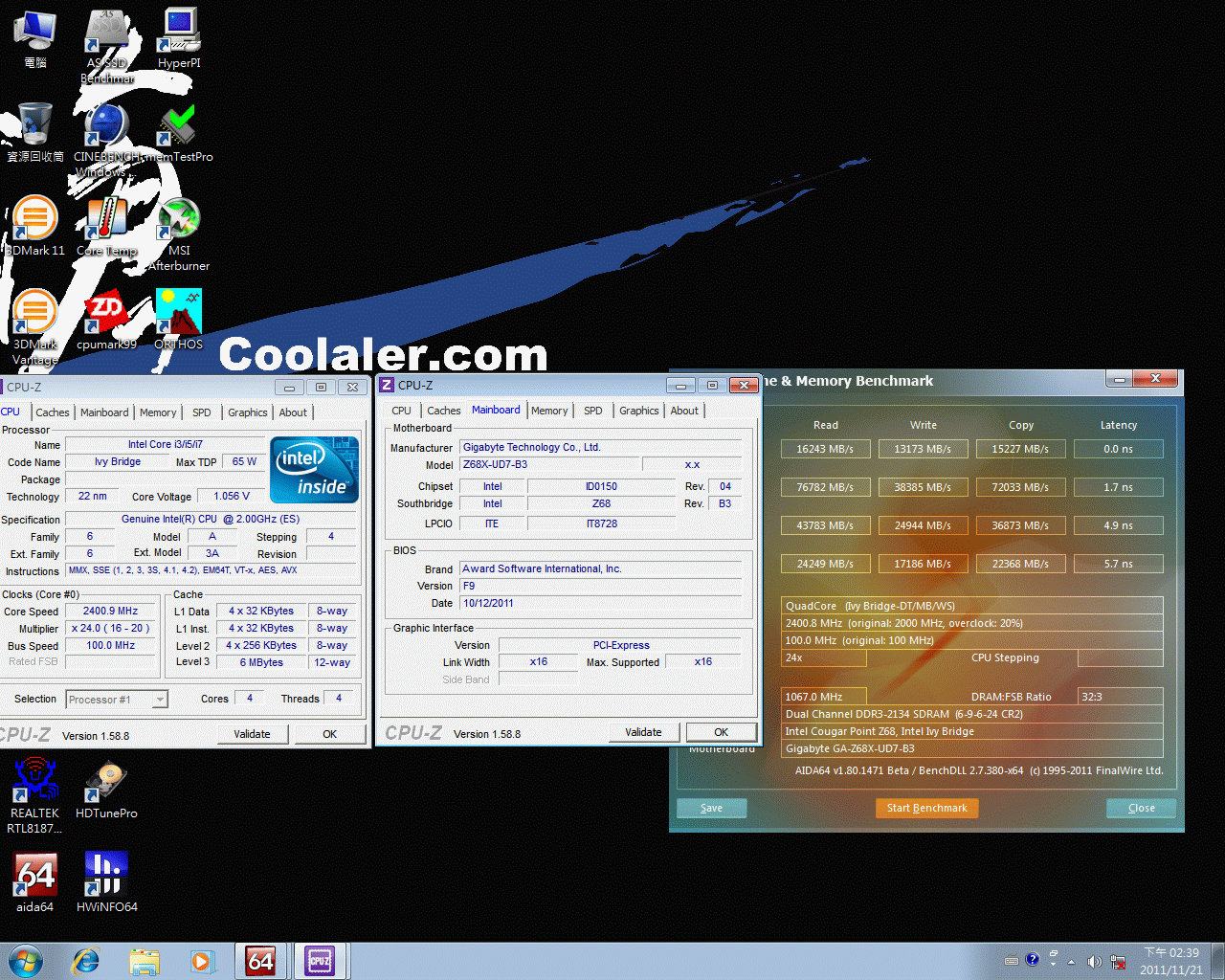Once again it is time for a taste of what will come from Intel before launch, this time Ivy Bridge. It is overclocking profile coolaler that has gotten his hands on an engineering sample with four cores and clocked at 2.0 GHz, where he ran the memories at 2134 MHz CL6.
Intel’s coming tick that will start at 22nm is based on the Sandy Bridge architecture and called Ivy Bridge. Ivy Bridge will sport minor improvements in the processor, while the graphics and northbridge will get the biggest lift. The graphics circuit is expected to be about 60 percent better than in Sandy Bridge, and the processor will have official support for PCI Express 3.0. But what we mainly expect of the new architecture is lower energy consumption. coolaler has an engineering sample of Ivy Bridge on the test bench.
Several media has said the processor sports B3 stepping, which is wrong. According to CPU-Z it has “Stepping 4” and coolaler self thinks the stepping is B1. The letter B reveals the processor has gone through one major revisionsince the first silicon. It is not unlikely that the Ivy Bridge processors we will see in stores will be stepping B2, since a new stepping usually takes three months to develop and manufacture.
The processor shows operating at 2.4 GHz in CPU-Z, which is the turbo frequency of the sample. It also reports 65W TDP, but this will most likely be adjusted before launch since Sandy Bridge can power four cores at 2.3 GHz with 45W TDP. The results in AIDA64 are a little lower than Sandy Bridge overall, probably a result from lack of support for Ivy Bridge in AIDA64 and by the motherboard. The memories ran at pretty aggressive speeds, 2134 MHz 6-9-6-24 CR2, so the results should be higher than they are. Ivy Bridge is estimated to be overall faster than Sandy Bridge.
Sadly we don’t get any more hints of the performance than this, but hopefully more results will be published soon. Ivy Bridge is still slated to launch in March-April for both desktops and notebooks, and the focus will be on energy efficiency, more than just better performance.
Source: coolaler















